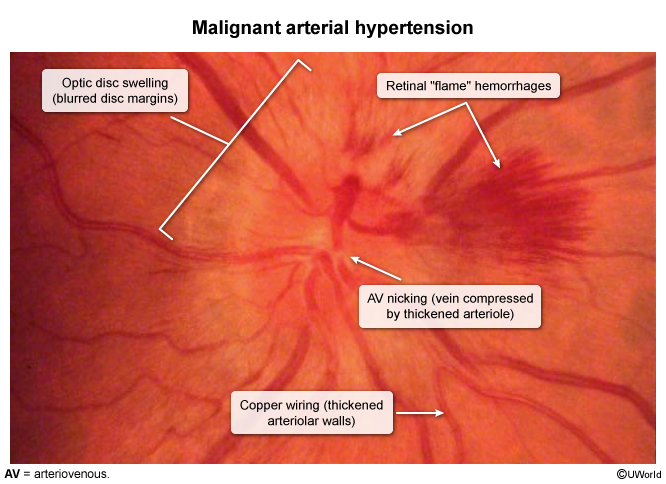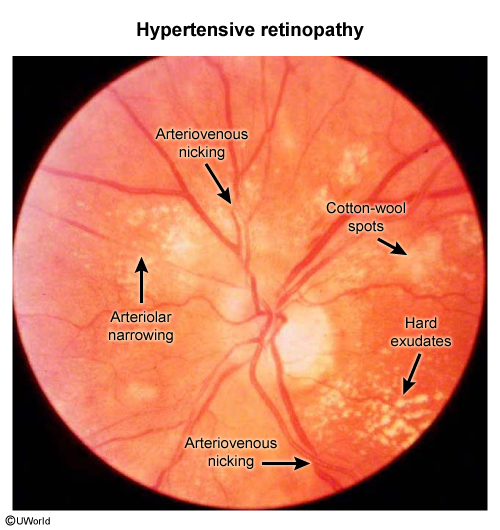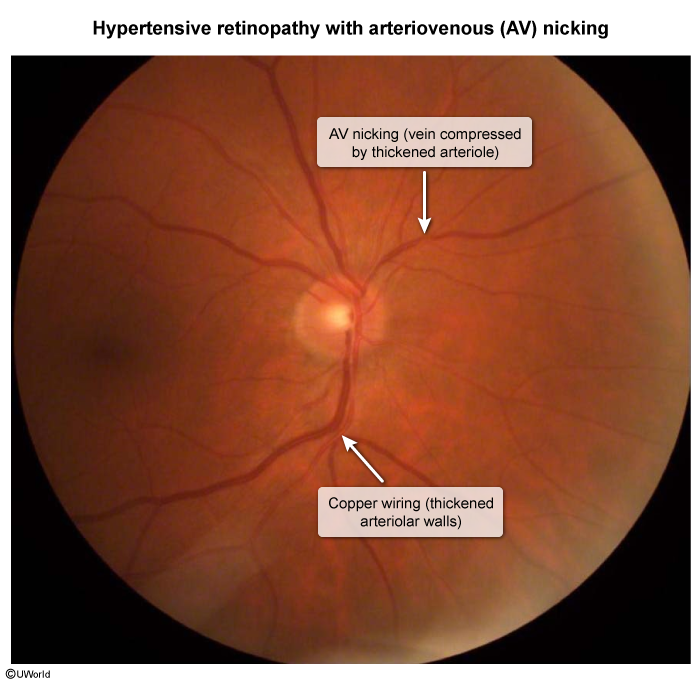Hypertensive Retinopathy
Article Sections
Introduction
Hypertensive retinopathy is a condition characterized by retinal vascular damage due to chronic systemic hypertension. Elevations in blood pressure can lead to a variety of structural and functional changes in retinal circulation, resulting in visual disturbances and vision loss. The severity of retinopathy is related to both the intensity and duration of hypertension and serves as an indicator of damage to other target organs (eg, heart, kidneys). Adequate blood pressure control is the mainstay of both prevention and treatment.
Pathogenesis
The pathogenesis of hypertensive retinopathy involves increased pressure within the small retinal blood vessels with subsequent microvascular damage. The initial autoregulatory response to blood pressure elevations in the retinal arterioles is vasoconstriction, which maintains retinal perfusion while limiting pressure injury to the distal capillary network. However, chronic hypertension eventually leads to autoregulation failure, resulting in ongoing microvascular injury.
Continue Learning with UWorld
Get the full Hypertensive Retinopathy article plus rich visuals, real-world cases, and in-depth insights from medical experts, all available through the UWorld Medical Library.
Images


